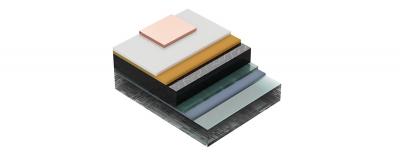KAUST researchers have developed a perovskite ink tailor-made for a mass manufacturing process called slot-die coating, producing PSCs that captured solar energy with high efficiency. The ink could also be coated onto silicon to create perovskite/silicon tandem solar cells.
 The planar p-i-n device architecture of the perovskite solar cell employed in the study. Image credit: KAUST
The planar p-i-n device architecture of the perovskite solar cell employed in the study. Image credit: KAUST
PSCs made in research labs are typically made by spin-coating, which is unsuited to mass manufacture. Slot-die coating, in contrast, is a manufacturing technique used industrially for many years. 'The process involves continuously and precisely forcing an ink through a narrow slit that is moved across the substrate to form a continuous film,' Anand Subbiah, a postdoc in Stefaan De Wolf's lab, said. 'This high-throughput technique would allow for roll-to-roll fabrication, similar to printing newspapers.'
Overall, the team's optimized slot-die coated PSCs captured solar energy with up to 21.8 percent efficiency, a significant improvement over the 18.3 percent previously recorded for PSCs made this way.
Even more significantly, from a commercial standpoint, was that the ink could readily be coated onto textured silicon to produce a perovskite/silicon tandem solar cell, Subbiah says. 'We were also able to make the very first slot-die coated silicon-perovskite monolithic tandem solar cell, recording a 23.8 percent efficiency,' he says.
'The development of scalable deposition techniques for perovskite solar cells is essential to bring this technology from the research labs to the market,' De Wolf says. 'Our next steps are making large-area devices and modules using our developed technology and testing their stability in the lab and the outdoors, while continuing to improve performance.'



